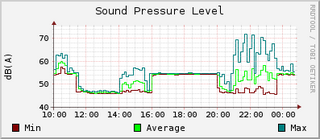libsigrok
libsigrok (sometimes abbreviated as "sr") is a shared library written in C, which provides the basic hardware access drivers for logic analyzers and other supported devices, as well as input/output file format support.
It is licensed under the terms of the GNU GPL, version 3 or later.
Getting the code
$ git clone git:https://sigrok.org/libsigrok
You can also browse the source code via gitweb.
Distribution packages
See Downloads.
Building from source
See Building.
Running the unit tests
$ make check
(check >= 0.9.4 must be installed)
Language bindings
libsigrok ships with a framework for different language bindings based on SWIG and Doxygen. Currently supported languages include C++, Python, Java, and Ruby (others can be added).
C++
See the C++ bindings API documentation for details on how to use the bindings.
The C++ bindings are used by PulseView, for example.
Python
See the Python bindings API documentation for details on how to use the bindings.
The Python bindings are used by sigrok-meter, for example.
Java
See the Java bindings API documentation for details on how to use the bindings.
The Java bindings are not yet used by any project hosted at sigrok.org. Please let us know if you're using the Java bindings in any of your own projects!
Ruby
The Ruby bindings are not yet used by any project hosted at sigrok.org. Please let us know if you're using the Ruby bindings in any of your own projects!
collectd plugin
There is a plugin for the collectd system statistics collecting daemon.
See this blogpost or the collectd wiki page for details.
An example config file snippet for collectd and libsigrok usage could look e.g. like this:
LoadPlugin "sigrok"
<Plugin "sigrok">
LogLevel 3
<Device "Sound level">
Driver "cem-dt-885x"
conn "/dev/ttyUSB3"
MinimumInterval 1
</Device>
<Device "Temperature">
Driver "uni-t-ut32x"
conn "1a86.e008"
MinimumInterval 1
</Device>
</Plugin>
Firmware
Some devices supported by libsigrok need a firmware to be uploaded before the device can be used.
See Firmware for details on how to get them and where to place them.
Resources
